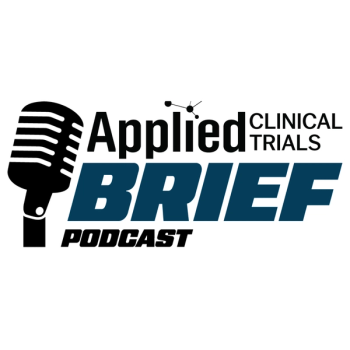Key takeaways
Data and AI are redefining clinical trial operations, requiring end-to-end data strategies, trustworthy AI frameworks, and a shift toward data-centric approaches aligned with regulatory changes like ICH E6(R3).
Cross-functional, digital fluency is essential as traditional roles evolve; clinical teams must develop multidisciplinary skillsets to engage with new technologies and processes across the trial lifecycle.
Collaboration and customization will drive success; no one-size-fits-all solution exists, making it crucial to involve stakeholders early, tailor implementations, and balance innovation with operational feasibility.
Digital tools and Artificial Intelligence (AI) are transforming life sciences at unprecedented speed—bringing immense opportunity but also introducing complex challenges.1,2
At the heart of new medicine development lies clinical research, one of the most heavily regulated domains. To date, several organizations feel puzzled, uncertain in how to address this new digital/AI evolution in a world of continuous changes. This article gives a holistic overview of the trends, the challenges and opportunities, and how to navigate and unlock the full promise of digital innovation to make clinical research better, faster, cost-effective, and safer for patients.
Industry trends, challenges and opportunities in clinical research
The digital transformation in clinical research can be grouped into five interconnected dimensions:
- Ever-growing data imperative: Data volumes and sources are exploding—from wearables, electronic health records, omics data (e.g., genomics) to artificially generated data (e.g., synthetic trial data, digital twins), and many other data sources. Data types can vary significantly, in format, quality, value, credibility, integrity, reproducibility, interoperability and so on.
- Perpetual technology advancements: Similar as the data expansion, also technologies—such as AI, machine learning, natural language processing (NLP), large language models (LLM) like ChatGPT, co-pilot—are rapidly evolving, introducing new capabilities on an almost daily basis. As the field is advancing so quickly, only limited guidance is currently available while many questions—particularly around ethics, privacy, and security—remain.
- Significant process changes: To handle the scale and complexity of modern data, often beyond human limits, processes need to change, and technology is brought in. Core clinical trials processes, such as data collection, data management and analysis, document writing, monitoring, quality control, help desk, and many others, are fundamentally changed and augmented by technology.
- Evolving roles and skillsets: Technology starts to take over administrative, repetitive, controlling and other tasks, enabling more strategic, creative and data-driven roles. Technology reduces the departmental barriers, requiring experts to understand and engage more earlier and later in the clinical trial life cycle. Teams need to be equipped with technical and cross-functional skillsets.
- Novel ecosystem dynamics: In this fast-evolving digital environment, where even professionals with deep domain expertise are struggling to keep pace, enabling understanding and acceptance within the broader public will require other dynamics. In addition, novel trial models (e.g., decentralized trials, real-world data trials) are being introduced, driving new ways of working within the ecosystem.
An overview of the different dimensions, each with its own challenges and opportunities, is shown in Figure 1.
What is needed now
Action 1: Get data right: connected, valued, and reliable
The growing data imperative requires another way of approaching and handling data. Establishing end-to-end data strategies, data flow diagrams (from data capture to data submission), data integration maps, detailed data categorizations (including quality, value, reliability, and reproducibility) and overarching data governance models will become essential to enable smart and best use of data, and overall trust in data.
Which data do I need to support the “research” question will become critical, next to making data timely and actionable. As an example, millions of data points are not really actionable.Prioritizing what matters most and a critical data mentality from the start is key to ensuring data serves both science and oversight. To date, approximately 25% to 40% clinical trial data collected is never used in analysis,3 a number that will only increase if no action is taken.
Regulators support this new way of handling data. For example, a data governance section to provide guidance on various data lifecycle elements and procedures was added in the ICH GCP E6 (R3) guideline, which will become effective in July 2025.4 Another example is the shift from a document-centric to data-centric approach, which forms the foundation of the draft ICH M11 Electronic Structured Protocol guideline.5 This data-centric shift enables the digital data flow—create data once, use everywhere—eliminating the current siloed data approach.6
Action 2: Build AI frameworks that are ethical, transparent, and trusted
While several organizations are exploring AI,1 there remain many questions and concerns on ethical, privacy, security and credibility principles. Developing AI frameworks and guidelines that include ethical guidance, legal and risk strategies, network architecture models, and credibility assessment approaches will be critical. Not only to enable trust and transparency but also to address concerns on algorithmic or unintended bias, informed consent, and data ownership.
Developing robust business cases and how to measure effective return of investment (ROI) for AI, so not only focusing on efficiencies but also effectiveness, is something that several organizations are struggling with to date. Key is to always start with the value proposal, not the technology, and learn from best practices approaches across the industry.
Application of AI in drug development is still a relatively new field as well as a strong evolving domain. Hence to date, limited detailed regulatory guidelines are available. EMA has issued a reflection paper in 2024 outlining steps to ensure AI is lawful, ethical, and technically and socially robust.6 FDA released a draft guidance in 2025 on how to build risk-based credibility frameworks.7 More guidance will follow once additional insights and data are available.
Action 3: Develop fit-for-purpose and risk-based processes
The data tsunami and perpetual technology advancements require a significant change in how clinical trials are designed, conducted, and analyzed. The current processes need to be revamped fundamentally.
Quality by design, risk-based/proportionate approaches, critical thinking, and fit-for-purpose are key concepts introduced to support the rapidly evolving technological advances while safeguarding participants’ rights, safety and well-being, and ensuring the reliability of clinical trial results.4
For example, think about what matters. Does it matter when a blood sample is drawn (PK sample versus a non-PK sample)? Consider which queries will impact the analysis and outcome, and which will not? The approach to risk should also be proportionate to the risk. Clinical trial data need to be sufficient to provide confidence, it does not mean all data need to be collected—the ‘Critical to Quality’ approach.
Requirements for computerized systems should be fit-for-purpose and risk-based. Systems can be deployed by the investigator/institutes or by the sponsor; they can be designed for clinical trial purposes or used for clinical trial purposes but designed for another purpose. Hence, each system might have its specific needs and focus. There is no one-size-fits-all approach.
Processes can be augmented by technology in different ways. For example, AI can transform a process within a single department or across all departments end-to-end, as illustrated in Figure 2. Various configurations in between are also possible.
To give an example, the informed consent process—a crucial process for ethical data use—can be augmented:
- at the medical writing department through GenAI-driven global study informed consent document creation in English and lay language starting from the scientific study protocol.
- across various departments—such as medical writing, global, local and site clinical operations, innovation/digital, IT, quality, privacy, data management—through GenAI-driven end-to-end informed consent material creation, covering global, country and site-specific material in local language with site-specific writing styles and layouts.
A cross-departmental, end-to-end approach will significantly reduce cost, time, and resources of all departments and external vendors involved in the consent process. It will also address fundamental eConsent adoption challenges, as outlined in the European Forum GCP eConsent Fit-for-Purpose Study Framework.8
Action 4: Equip clinical teams with digital and multidisciplinary skills
With technology/AI taking over administrative and repetitive tasks, human roles will shift towards more strategic, creative, critical thinking and data-driven roles. Teams will be involved earlier and later in the clinical trial process and need to build up skills outside of their former departmental role.
As an example, while a clinical data manager currently focuses on managing the data once received, a clinical data scientist will need to take a more holistic view on data, use a scientific, risk-based and critical data-minded approach, and consider the broader ecosystem needs (e.g., patients, sites, ethics committees, health authorities). The same shift is unfolded across nearly every clinical research role.
What has also become clear is that the people side is equally important to the technology side. If the team doesn’t understand or trust the technology/AI, the value gets lost. We need to equip our workforces to understand and how to apply technology/AI in their role. Hence a well-established training program, including both digital and cross-functional insights, and an end-to-end mindset, will be critical. With the rapidly evolving digital transformation, this will not be a one-time event, but a continuous upskilling of talent will be required.
A frequently raised concern is the impact of digital transformation on the workforce. While the number of people may remain the same, the roles and skills sets will fundamentally change, along with the value these roles deliver. Figure 3 illustrates a forward-looking, staged approach in which AI enhances human capabilities, ultimately leading to a collaborative machine-human working model—with humans always remaining in the loop.1 However, each organization, department and process will have its own journey in deciding when, where and how to explore and implement AI. There is no one-size-fits-all approach.
Action 5: Enable effective, cross-industry collaboration models
Enabling a common understanding will be a first, fundamental step to bring the broader ecosystem on board and build trust-based collaborations. In a world that is continuously evolving, this can be challenging, as even for commonly used terminologies such as eConsent, we see significant disconnects in understanding even between the clinical research professionals.9
Cross-industry collaboration engagements—such as the multistakeholder advisory group of ACT EU10—involving participants, sites, health authorities, ethics committees, and others will be critical to enable understanding, trust and drive acceptability within the broader public. When deploying new technology, all stakeholders should be involved early on, from the concept stage and along the entire process. This will not only help with public understanding and acceptance but also with the overall customer-centric technology development.
Setting the right expectations and potential benefits and challenges for a specific study and its stakeholders from the start, will be key. Remember, there is no one-size-fits-all—each indication, each study, each site, each participant might have its own needs. Technology is never the starting point; it starts with the value it drives for that specific study and its stakeholders.
Taking a holistic view across the ecosystem will be needed to balance the impact between various stakeholders. For example, highly flexible, personalized participant solutions might have a significant impact on the site’s workload or result in unmanageable analysis expectations due to the high variability in designs. Avoidance of unnecessary complexity, unnecessary burden on participants and sites, and operational flexibility will always need to be taken into consideration to define the most optimal implementation.
Major opportunities ahead, if applied smartly
The roller coaster of digital revolution is unstoppable and reshaping the entire ecosystem—ignoring it is no longer an option without risking falling behind. The opportunities are significant but so are also the challenges. An agile, structured and smart approach to address the many barriers will be key.
The five actions described in this article give overall guidance on how to navigate the challenges and enable the full potential of digital transformation. They are applicable for any clinical trial department—as all are impacted. We hope that this article brings the clinical trial community one step closer to rewire the new era of clinical research.
About the author
Hilde Vanaken, PhD, Eng, MsC is Head, Pharma R&D Transformation at TCS Life Sciences, in addition to her role as Head European Forum for Good Clinical Practices (EFGCP) eConsent initiative
References
- TCS Next Generation Life Sciences: Powered by Generative AI. https://www.tcs.com/content/dam/global-tcs/en/pdfs/what-we-do/industries/life-sciences/whitepaper/next-generation-life-sciences.pdf
- TCS Future of care Predictive. Preventive. Personalized. https://www.tcs.com/content/dam/global-tcs/en/pdfs/what-we-do/industries/healthcare/Solution/connected-care-ecosystem-reinvent-healthcare.pdf
- Dealing with Data Over-Collection In Clinical Trials. Clinical Research News, 10 Dec 2024. https://www.clinicalresearchnewsonline.com/news/2024/12/10/dealing-with-data-over-collection-in-clinical-trials
- ICH Guideline for Good Clinical Practices E6 (R3). Final Guideline, 6 January 2025. https://database.ich.org/sites/default/files/ICH_E6%28R3%29_Step4_FinalGuideline_2025_0106.pdf
- EMA Reflection paper on use of artificial intelligence in the medicinal product lifecycle. 9 September 2024. https://www.ema.europa.eu/en/documents/scientific-guideline/reflection-paper-use-artificial-intelligence-ai-medicinal-product-lifecycle_en.pdf
- Digitizing The Clinical Protocol: Small Steps For Seismic Change. Clinical Leader, 30 January 2024. https://www.clinicalleader.com/doc/digitizing-the-clinical-protocol-small-steps-for-seismic-change-0001
- FDA Considerations for the Use of Artificial Intelligence to Support Regulatory Decision-Making for Drug and Biological Products. Draft Guidance, January 2025. https://www.fda.gov/media/184830/download
- Effective eConsent Strategies for Every Study: Utilizing the eConsent Fit-for-Purpose Study Framework. Applied Clinical Trials, 12 August 2024 https://www.appliedclinicaltrialsonline.com/view/understanding-acceptability-econsent-global-ethical-industry-perspective
- eConsent: Why Language Matters. Applied Clinical Trials, 20 December 2023. https://www.appliedclinicaltrialsonline.com/view/econsent-why-language-matters
- MultiStakeholder Platform Advisory Group (MSP AG) of the Accelerating Clinical Trials In Europe (ACT EU). ACT EU is a joined initiative of the European Commission, European Medicines Agency and the Heads of Medicines Agencies. https://accelerating-clinical-trials.europa.eu/our-work/multi-stakeholder-platform_en






.png)



.png)



.png)
.png)
